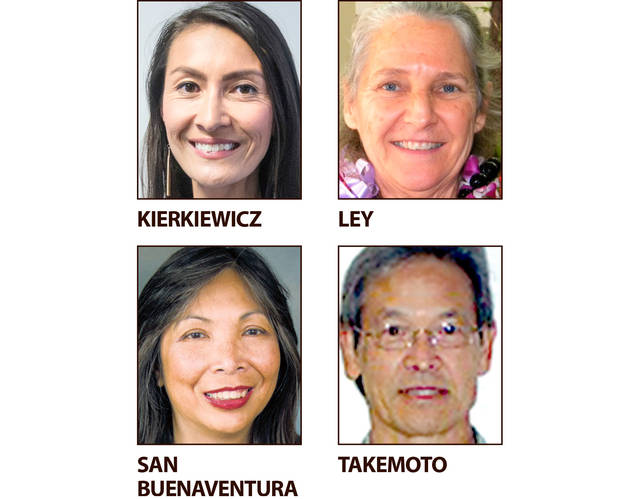Lava aid up for final vote

A bill to provide Hawaii County with $60 million to assist with recovery from last years Kilauea eruption is expected to have its final vote today in the state Legislature.
A bill to provide Hawaii County with $60 million to assist with recovery from last year’s Kilauea eruption is expected to have its final vote today in the state Legislature.
If approved by the state Senate on third reading, House Bill 1180 would then be sent to Gov. David Ige for his signature, assuming it’s not amended on the floor, said Rep. Joy San Buenaventura, who introduced the measure.
ADVERTISING
“He can sign it as soon as he gets it,” she said, referring to the governor. “Then he can release the funds as soon as he signs it.”
The aid is broken down into $20 million in grants and $40 million in no-interest loans.
Ige previously released $22 million for disaster response and recovery planning efforts.
San Buenaventura, D-Puna, said the state could forgive the loans — intended as matches for federal aid — if it is satisfied with how the funds are being spent. The bill also requires the County Council to adopt a resolution requesting release of funds.
San Buenaventura said that’s meant to add another layer of checks and balances following concerns the county wasn’t being specific enough with its requests.
That’s a role the council appears to be taking seriously.
On Thursday, council members postponed adopting bills to accept the disaster aid in order to flesh out more details with county administrators.
“I expect we will continue to refine the facts and figures,” said Puna Councilwoman Ashley Kierkiewicz, who made the motion to postpone following a presentation by Roy Takemoto, an executive assistant to Mayor Harry Kim, and Research and Development Director Diane Ley. “I feel more comfortable marinating on what was presented to us.”
For their part, the administrators say they won’t know exactly what long-term recovery will look like until they complete a series of studies or pilot programs that will create a path forward. They say they needed the recovery assistance to fund the work.
As for planning efforts, the administrators noted the county is executing a $1.6 million contract with a consultant, Tetra Tech, to develop a long-term recovery plan that should be released at the end of the year.
Additionally, an economic recovery plan for lower Puna is being funded, and the county is seeking to hire a nonprofit to act as a case manager for displaced residents. Takemoto estimated 2,000 people were displaced during the eruption that destroyed more than 700 homes.
Takemoto told the Tribune-Herald those efforts will work together to determine what long-term recovery programs are implemented.
One idea being considered for a pilot program is starting a land trust to help meet housing needs. That could involve working with a nonprofit to acquire vacant land parcels in existing Puna subdivisions.
Ley said community input will be part of those efforts.
“We haven’t stopped talking to the community,” she said.
Council members noted some of the figures presented were still vague. Some also told the administrators they would like to see more money dedicated for economic recovery.
“It’s important we keep this conversation going,” said Puna Councilman Matt Kaneali‘i-Kleinfelder, “so the needs of the community are starting to be met.”
As part of their presentation, Ley and Takemoto gave the council members a spreadsheet listing a recovery budget of $196 million. That doesn’t include federal community development block grants the county also is seeking.
Most of that — $161,786,500 — would be used for building “complete communities,” according to the spreadsheet, and would be funded by an estimated $120 million in public assistance grants from the Federal Emergency Management Agency and $40 million in state loans.
That got the attention of Council Chairman Aaron Chung, who said he thought the administrators would have more to say about it.
“I’m just surprised it would have the shortest discussion,” he said.
Ley said the county recognizes more detail is needed.
“We’ve been working diligently to bring on board professionals that know how to respond to significant-sized disasters that can help us with planning out that process,” she said. “Because recovery is not just one component, it is multi-layered, it is complex.”
The council also passed a resolution to use a FEMA grant to fund three temporary positions at the Planning Department to assist the disaster care management program, and passed a bill on first reading to add Highway 132 restoration to the budget.
About 3 miles of the highway is inundated with lava from last year’s eruption.
Email Tom Callis at tcallis@hawaiitribune-herald.com.


